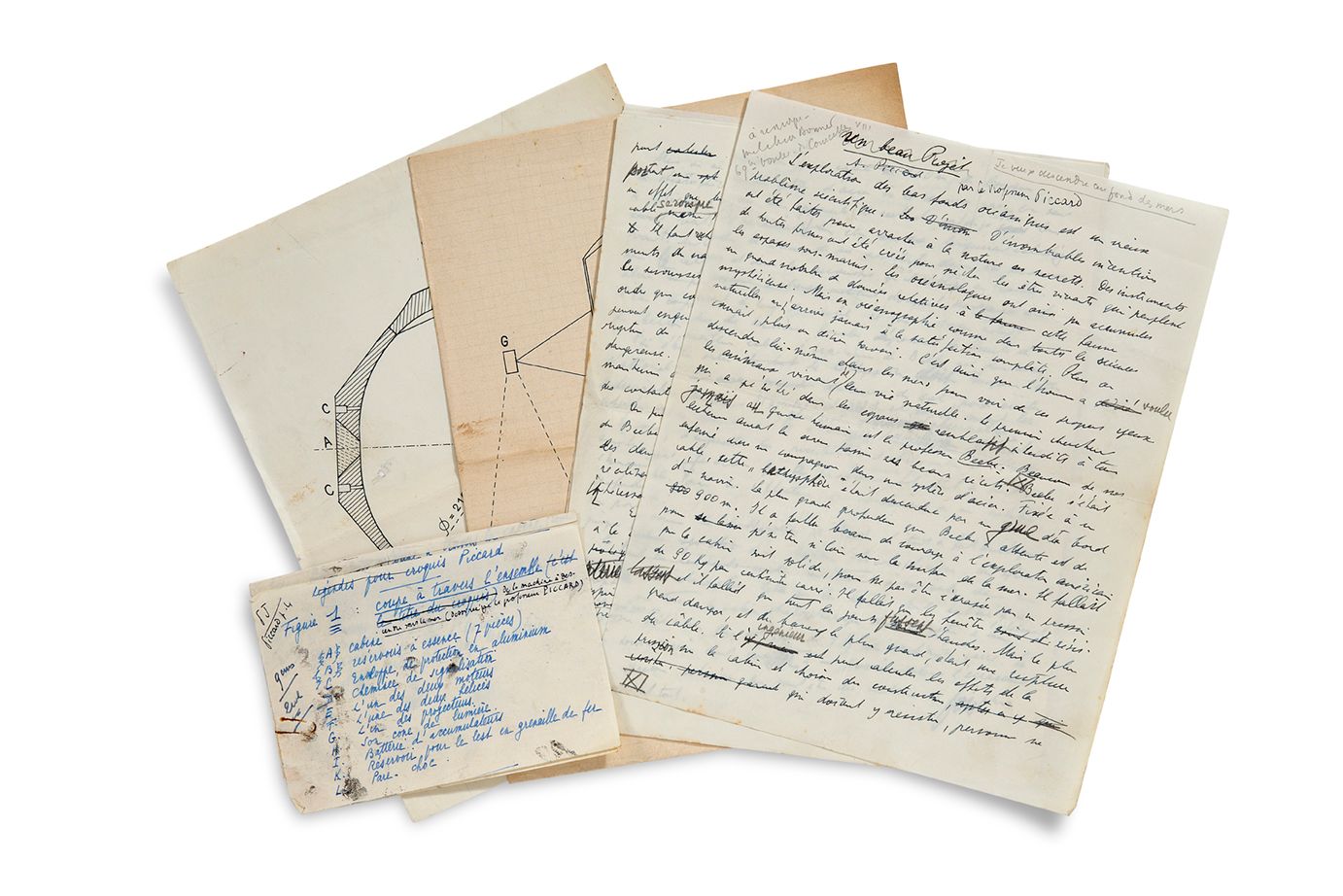Description
PICCARD Auguste (1884-1962) physicien suisse.
MANUSCRIT autograph signed at the top "by Professor Piccard", A beautiful project; 5 pages in-4. On oceanographic exploration and his bathyscaphe. Article with erasures and corrections, intended for the Flambeau. "The exploration of the ocean depths is an old scientific problem". Piccard explains the improvements he intends to make to the "bathysphere" of Professor BEEBE, who was able, in his steel sphere, to descend to 900 m. Piccard underlines the dangers of the undertaking and the courage of Beebe. But he would like to improve this technique, in order "to increase the possibilities of observation and to avoid the dangers", which is completely feasible. "In short, Beebe's bathysphere is completely analogous to the cabin of an atmospheric balloon: a sphere maintaining in its interior an atmosphere such as men are accustomed to breathing on earth. The stratospheric cabin must resist the bursting caused by an external depression [...] the submarine cabin must resist the crushing by an external pressure which can be hundreds of times greater ". He recalls the advantages of the free balloon over the captive balloon. "Why then not also cross in water the gap which distinguishes the free balloon from the captive balloon". He was able to carry out numerous researches thanks to the Belgian National Fund for Scientific Research, and he describes the apparatus that he conceived: "the cabin consists of a steel sphere, interior diameter of 2, 19 m (like the Belgian stratospheric cabins), thickness of the walls 7,5 cm. As the cabin is heavier than water, it is carried by a tank containing, not gas, but a hydrocarbon lighter than water. To go down the hydrostat is loaded with ballast. It must descend in 1 hour to 4000 m. Arrived at the desired depth, the pilot gives ballast, just like in free balloon. He balances himself; he can be reloaded by letting water enter the cabin; he can balance himself very close to the bottom of the sea by means of a cable which drags, like the guide-rope of the aeronaut. If there is too little current in the water to move the apparatus, it will be possible by means of two small electric motor-driven groups to impart a speed to the submarine which will be 10 cm per second (360 m. per hour). This is just what is needed to examine visually all the fauna that crawls and crawls on the ground. The two windows, 15 cm thick, have on the inside a free diameter of 10 m., on the outside they widen to 40 cm in diameter. That is to say that the view will be extended. Powerful headlights placed outside will illuminate what no human eye had ever seen. A camera will record at a rate of 10 views per second all the movements of the inhabitants of these areas. When we want to go up, we will give ballast, and in one or two hours we will have regained the surface of the sea "... Etc. If The article is accompanied by 2 plans in ink representing the apparatus and the cabin in section, with handwritten legends.
150
PICCARD Auguste (1884-1962) physicien suisse.
